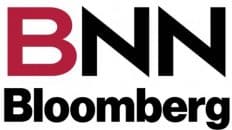I was going to initiate this week’s dissertation with the rhetorical question: “I’ve got good news and bad news, which do you want first?” For this week’s report, I had to make a minor correction, and changed it to, “I’ve got bad news and not so bad news.” Maybe you don’t want either?
In keeping with these popular sayings, these options are offered to the battered fossil fueled consumer who may just forget about the glass being half full or half empty and just throw out the glass!
The near current pricing scenario is one that is grimy and will probably hold for the balance of 2022.
Although it may sound as if I am repeating myself, the supply/demand teeter-totter is completely out of balance, and the consumer is at the wrong end of this see-saw.
In the big picture, the latest U.S. inventory report shows levels of crude now 15% below the 5-year average, gasoline is down a scary 10%, and distillates, the most critical of transportation fuels, down an unimaginable 23%.
With the national average pump price of gasoline now just above $2.00 per litre here in Canada, and $5.00 per gallon in the U.S., it would be logical to assume that demand corrosion would set in. Not so. In fact, the rate of demand change is increasing not decreasing for gasoline, diesel, and jet fuel. If we are to look to the refining industry to crank up production to keep pace with demand, well, there is little left to crank!
East coast facilities are running at 99% capacity, Mid-west, 94%, and Gulf coast is at 96%. We are at the point in some areas where unless imports can be somehow secured the only alternative may be rationing, especially in the northeast of the U.S. and Canada.
The only members of the fossil fuel supply chain that are not complaining are the refiners. Compared to the start of the year, the refining margins, the difference between the cost of crude and the wholesale price for gasoline, have increased by 34% in Vancouver, 38% in Calgary, 68% in Toronto, and 52% in the Halifax market.
So, the refiners are happy, the consumers are not!
What about the Alberta crude oil producers? Surely with West Texas Intermediate (WTI) hovering near $120/bbl they must be euphoric by now.
Not really because the discount for Western Canadian Select (WCS) versus WTI has widened not narrowed. The reason that Alberta is not fully benefiting from high global crude prices is that WCS is falling out of favour with U.S. refiners; this is because more natural gas is needed to process WCS, and natural gas prices are at, or near, record levels.
Another factor is that U.S. Gulf coast refiners are now flooded by heavy sour crudes because of President Joe Biden’s decision to release crude from the country’s Strategic Petroleum Reserve. This has increased the WCS discount relative to WTI as WCS is getting backlogged here at home.
So, the bad news for the consumer is continued higher prices at the pump – and that won’t change soon.
The not so bad news is that Alberta crude is stuck in Alberta.
All this could change if we just howl at the moon.
– Roger McKnight – B.Sc., Senior Petroleum Analyst








Add comment